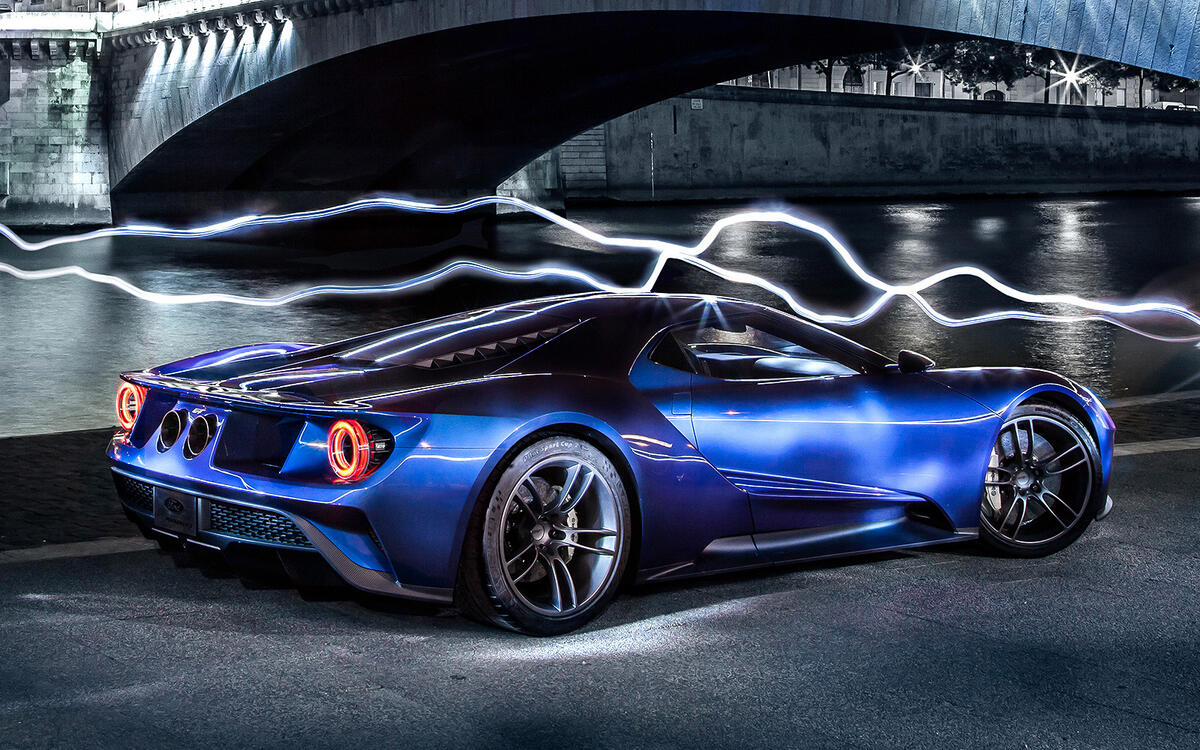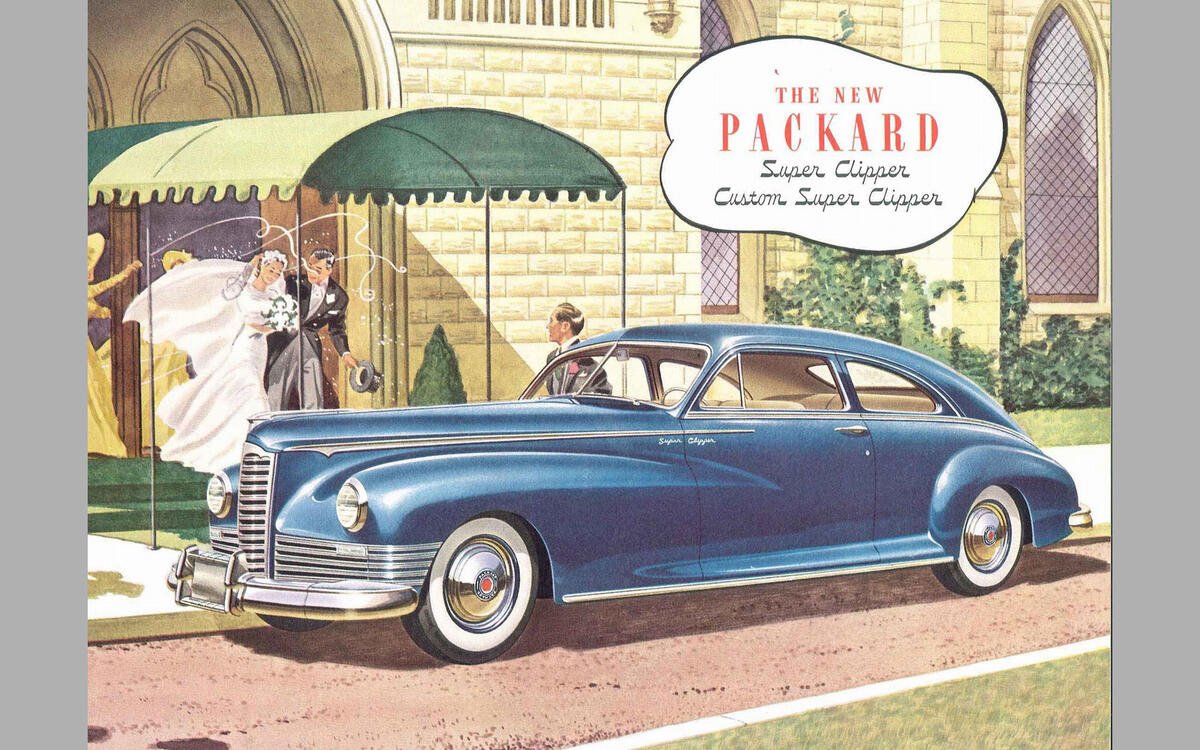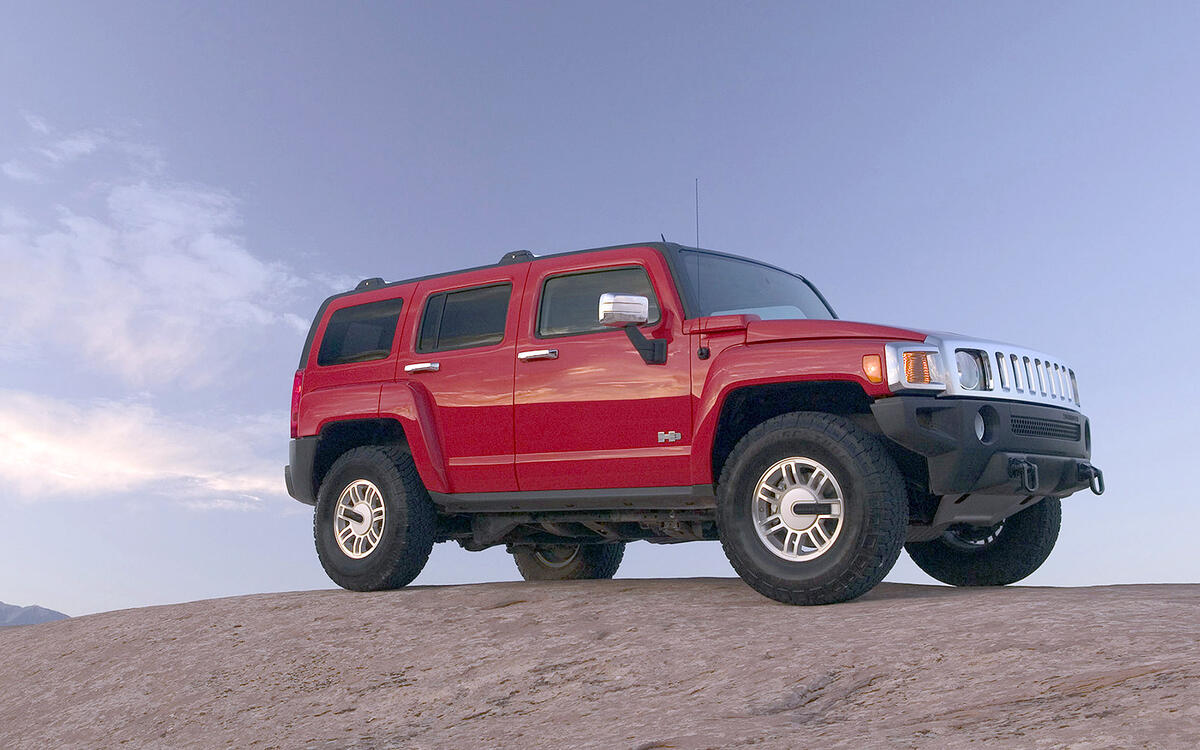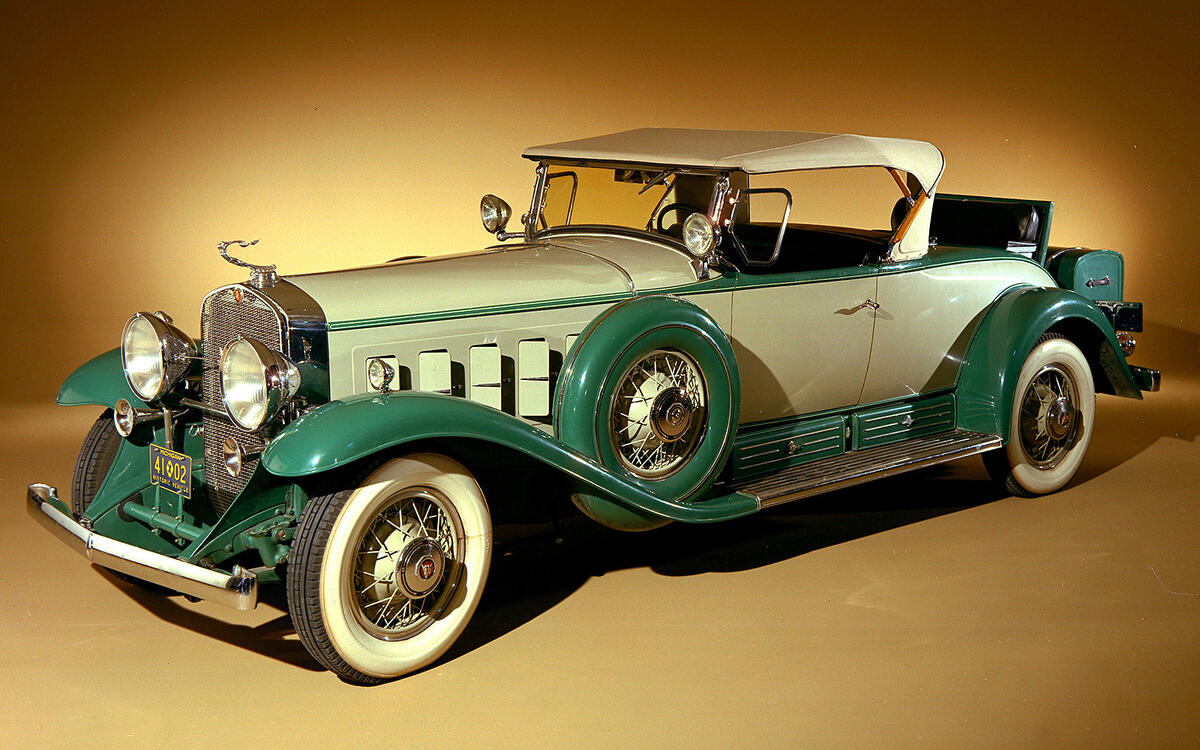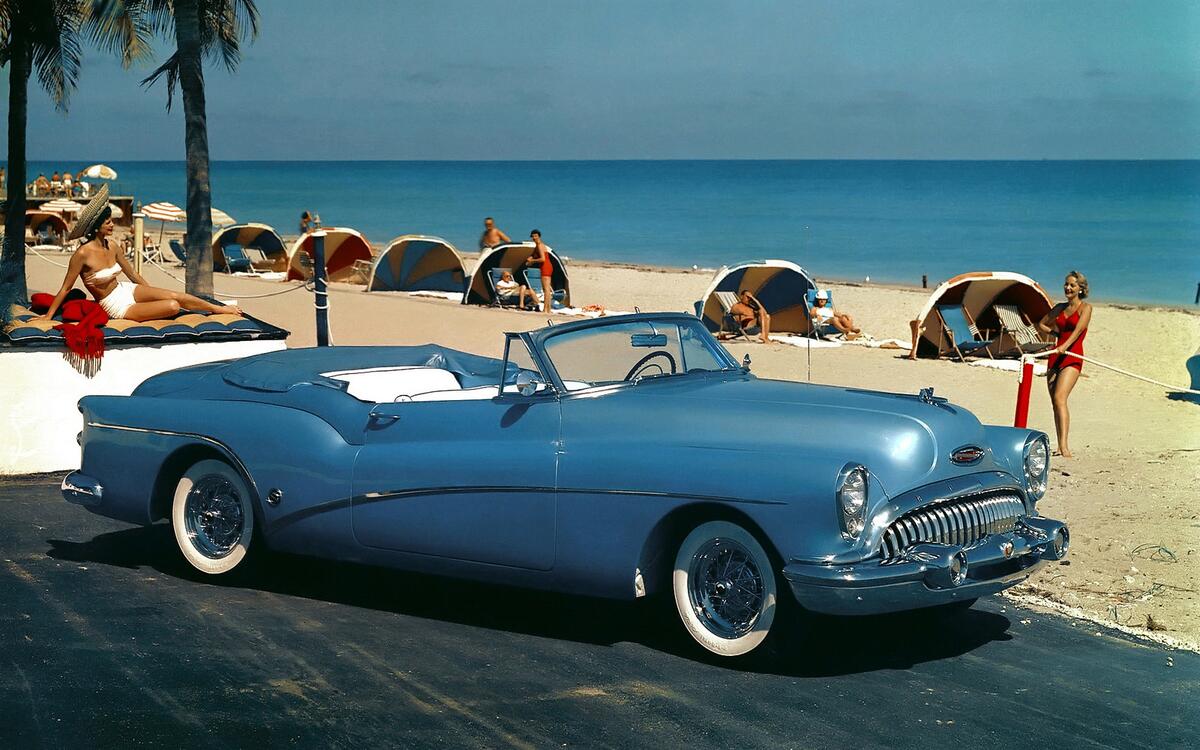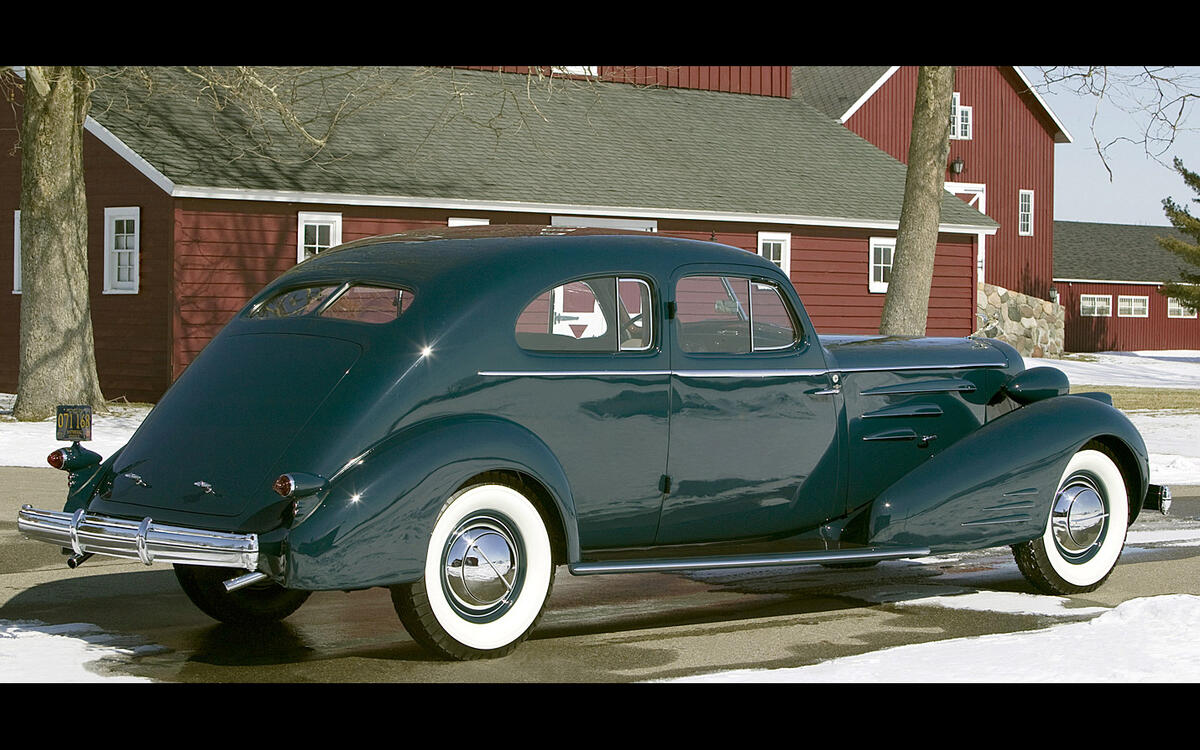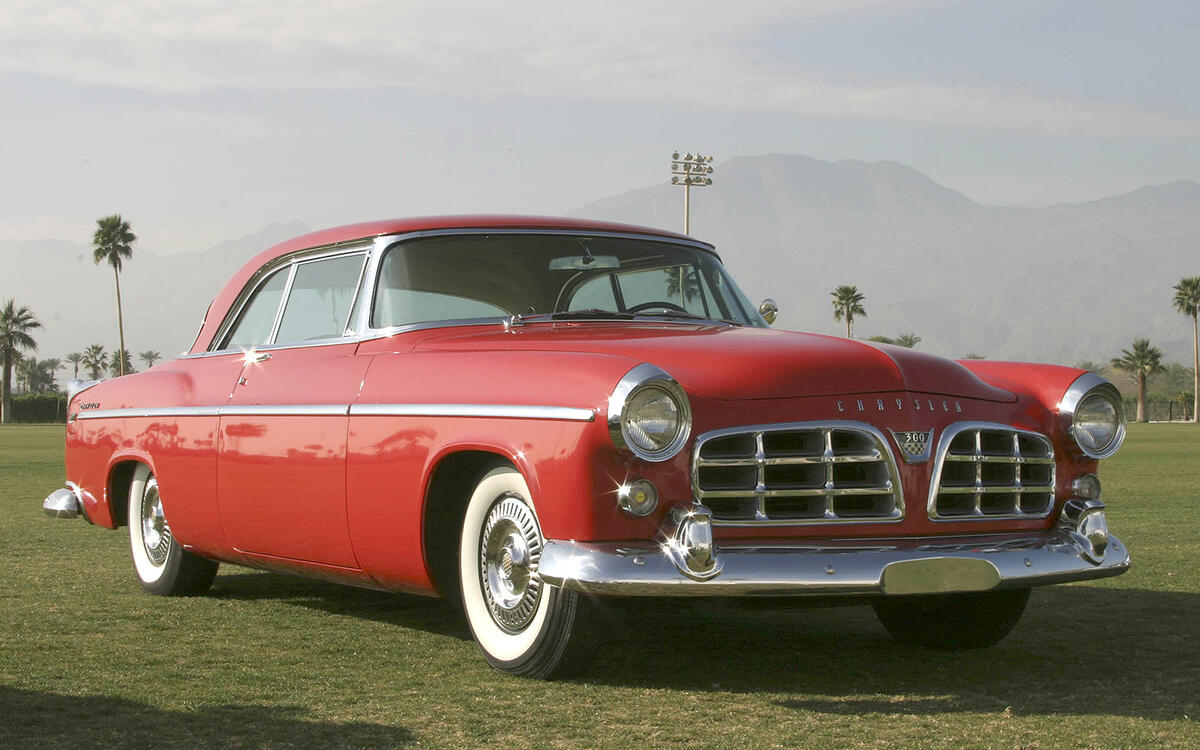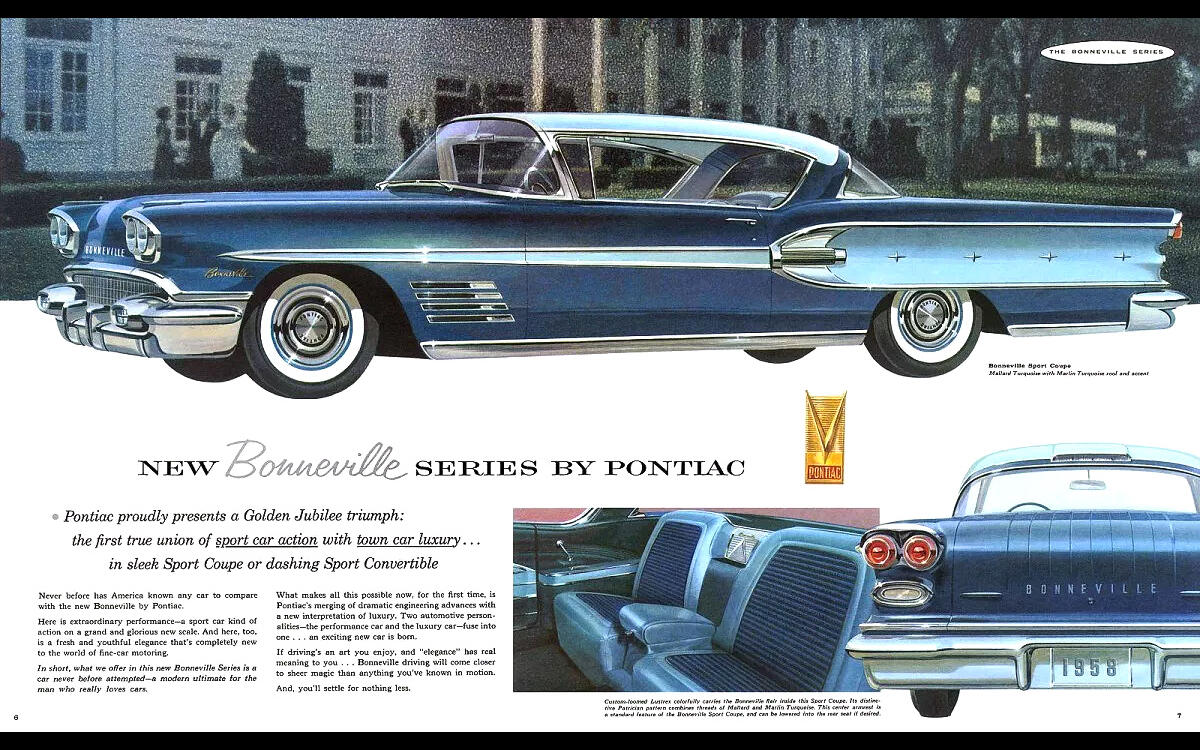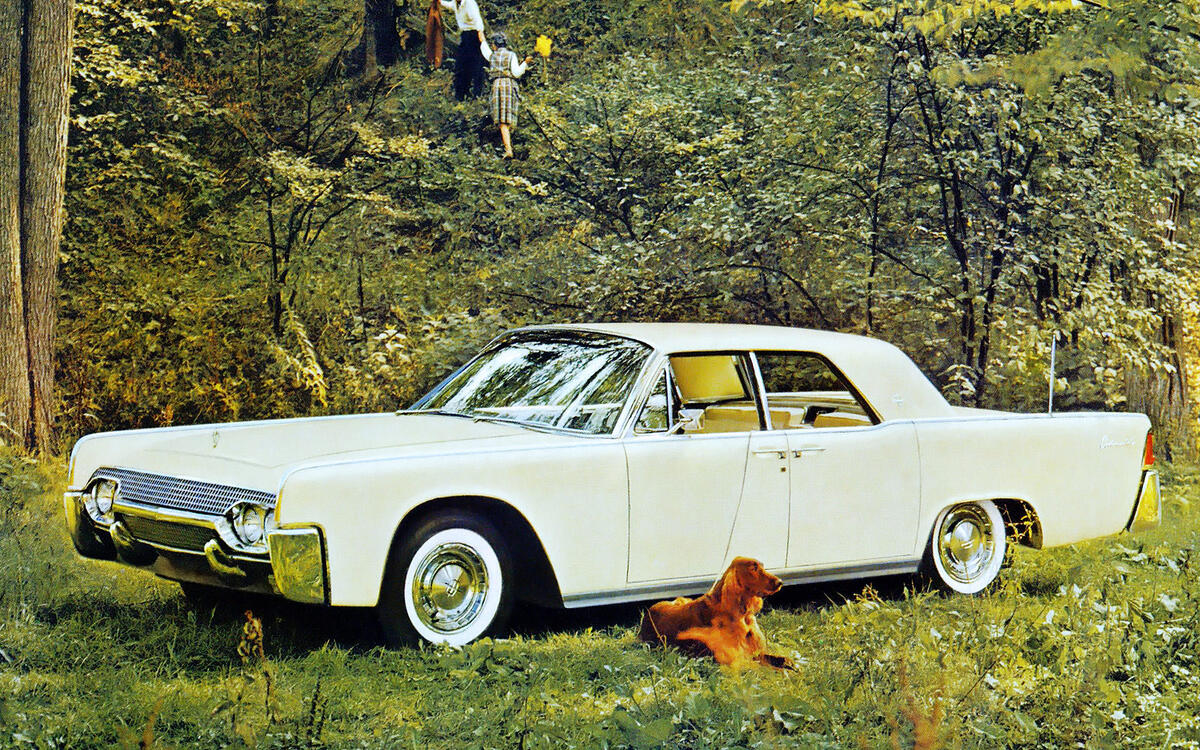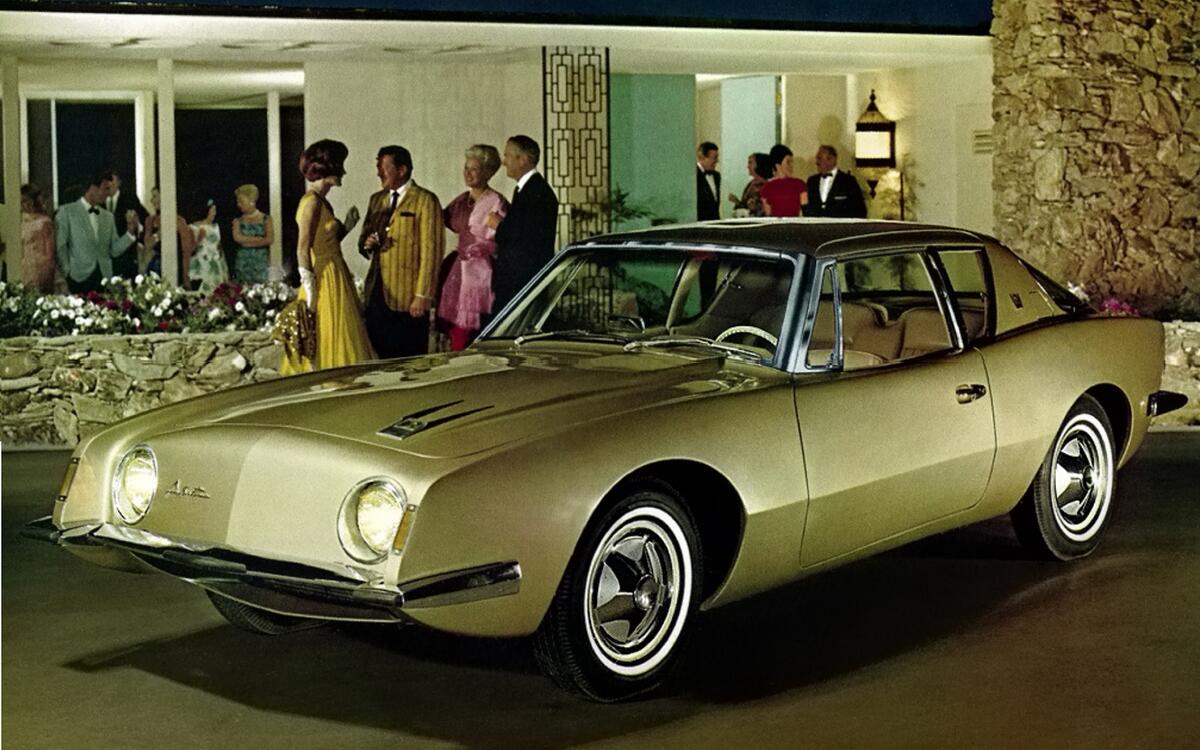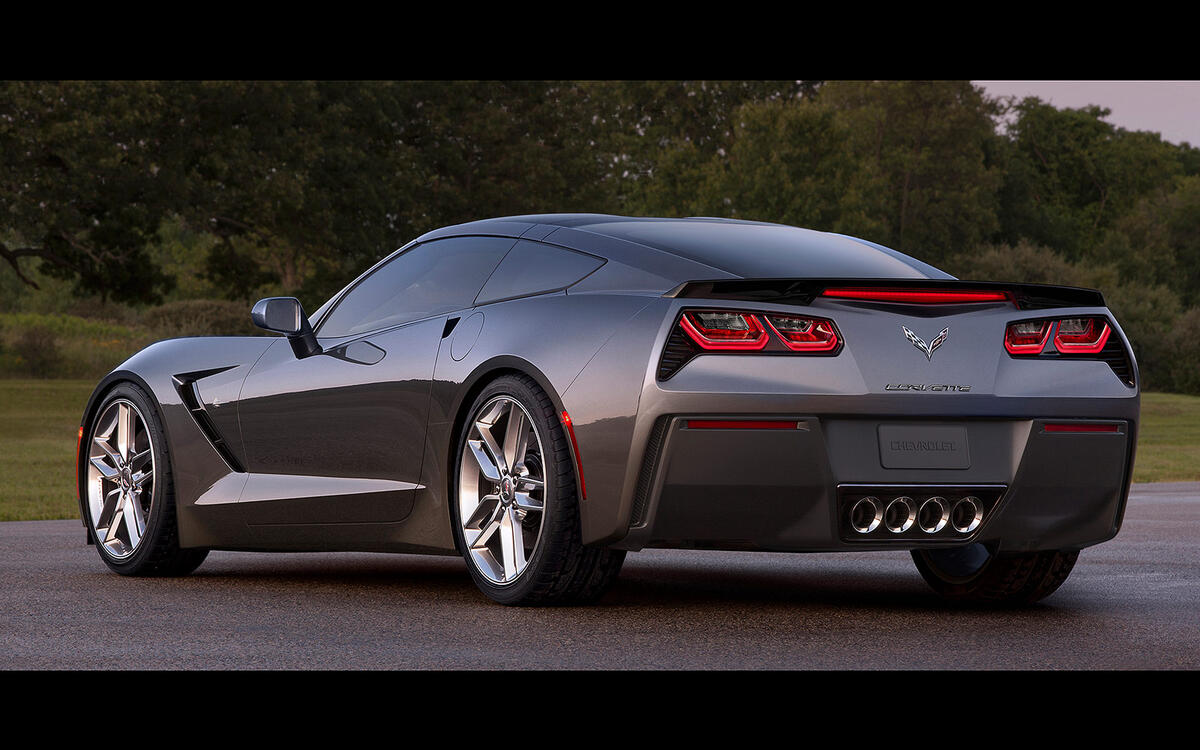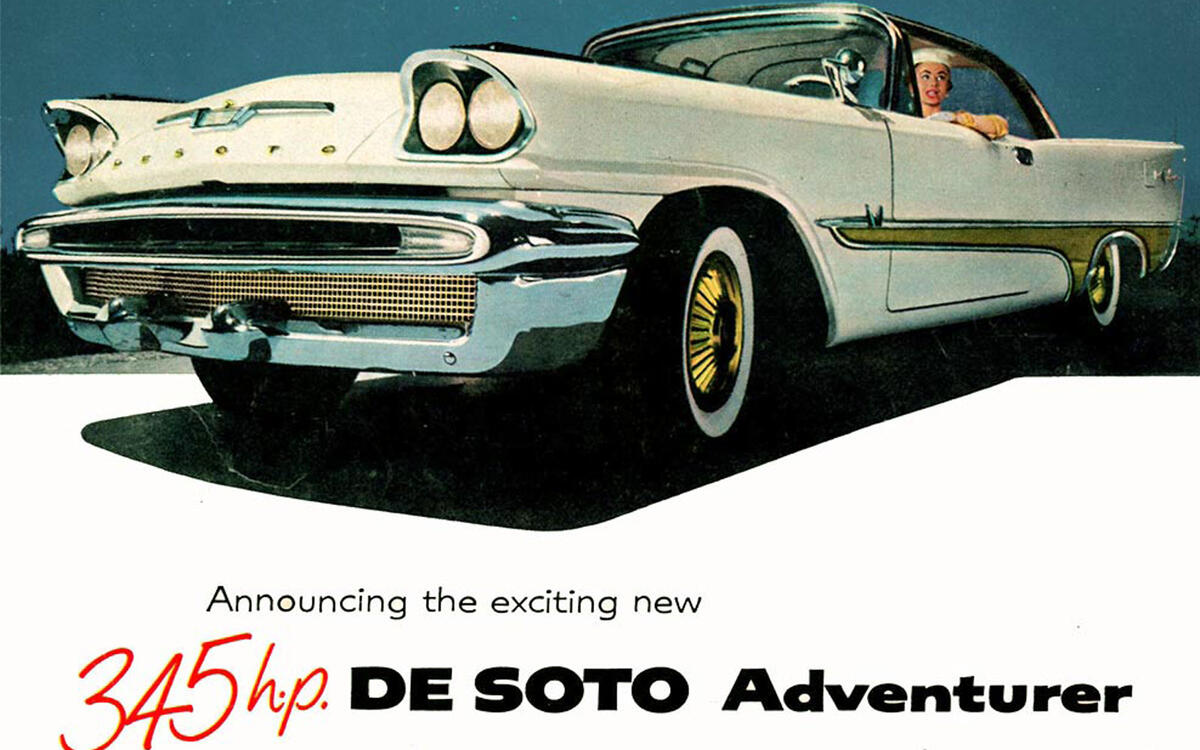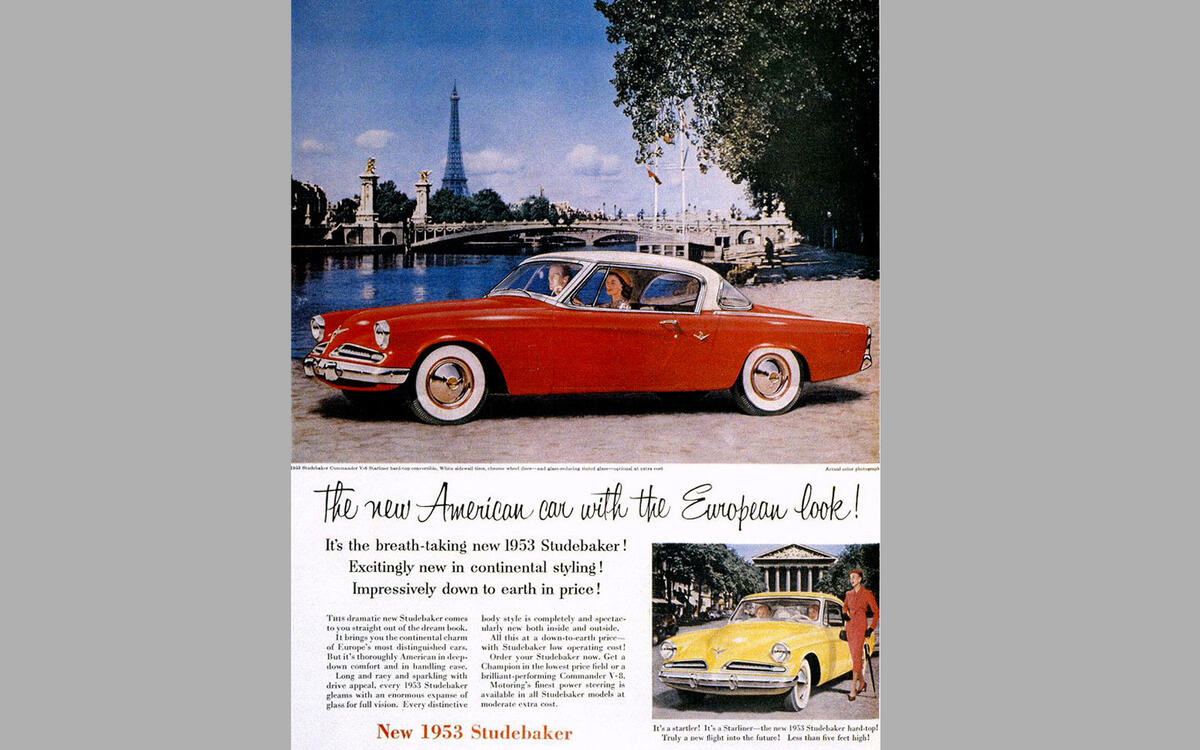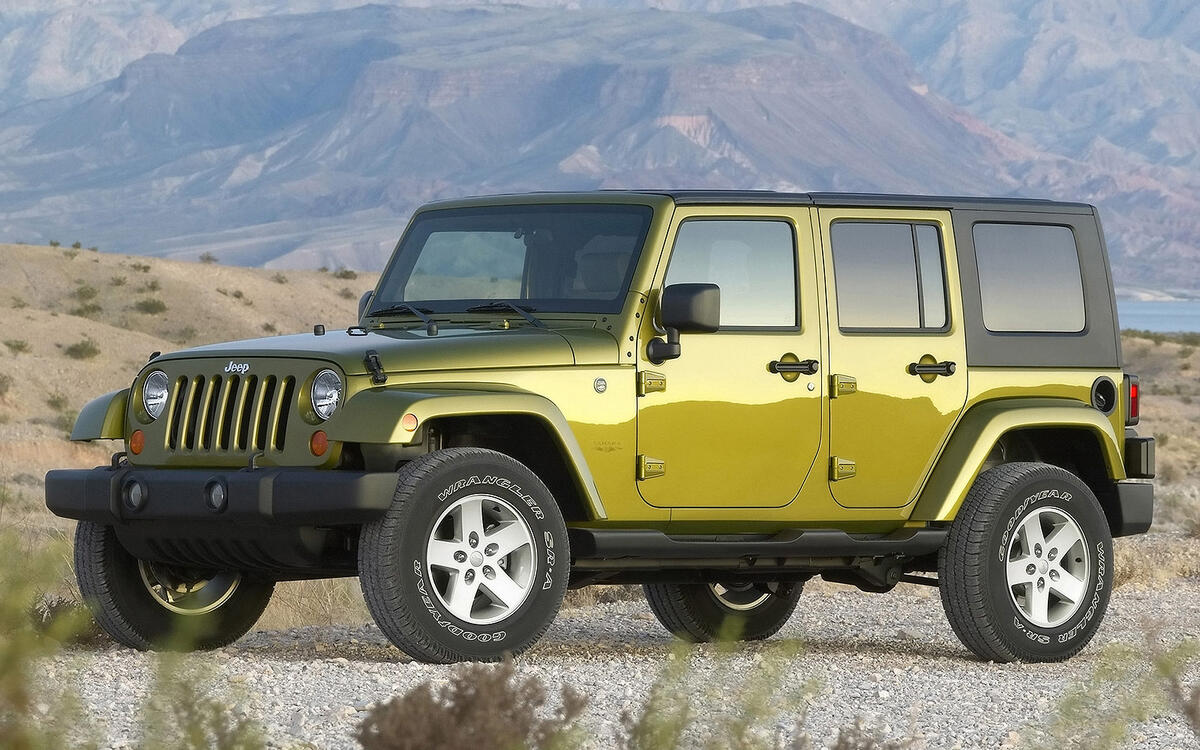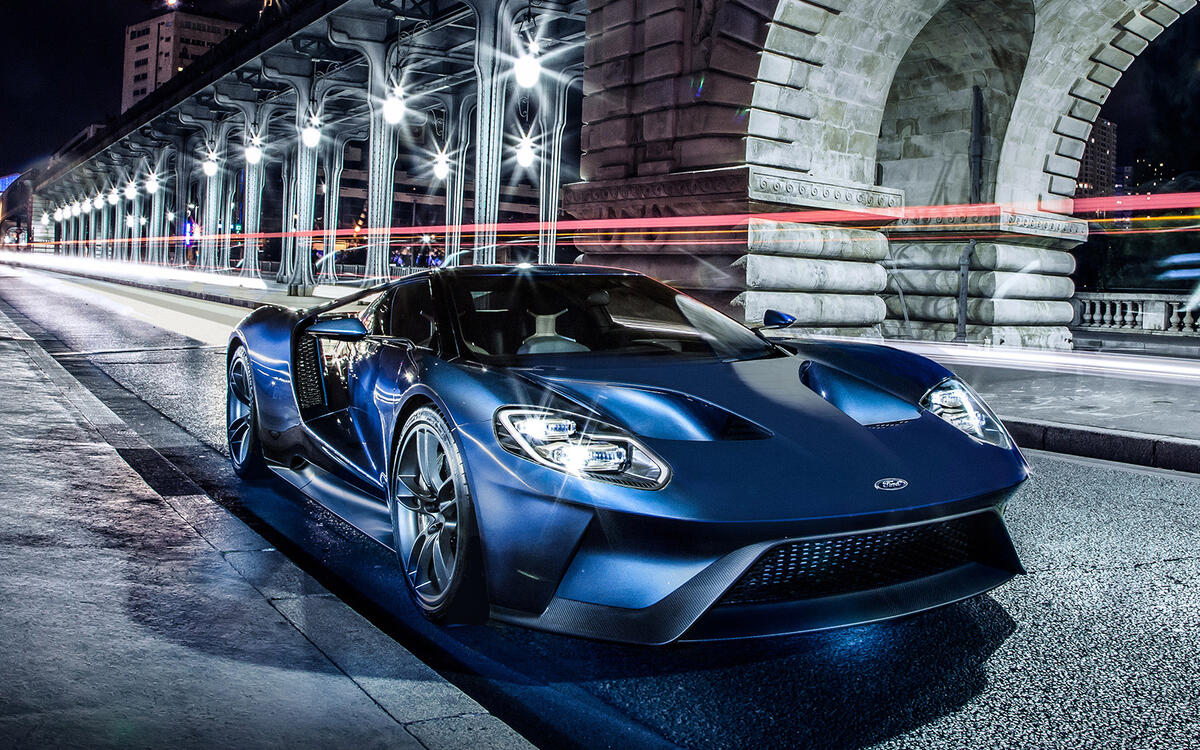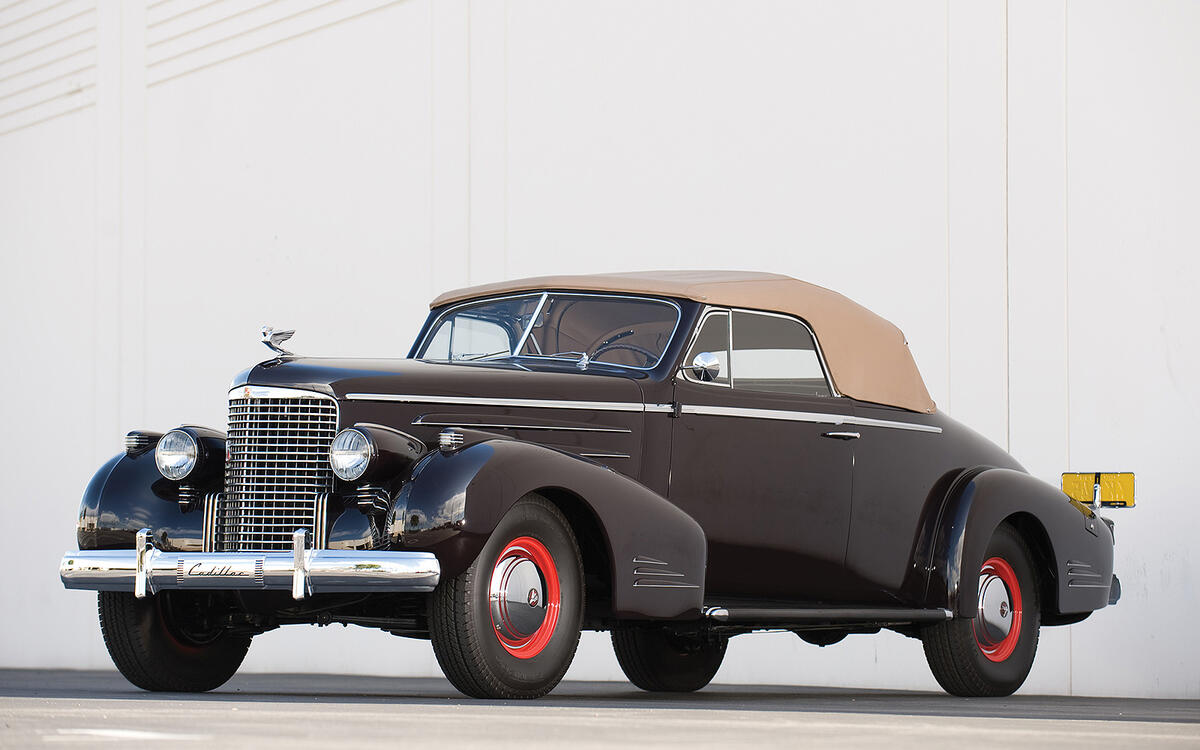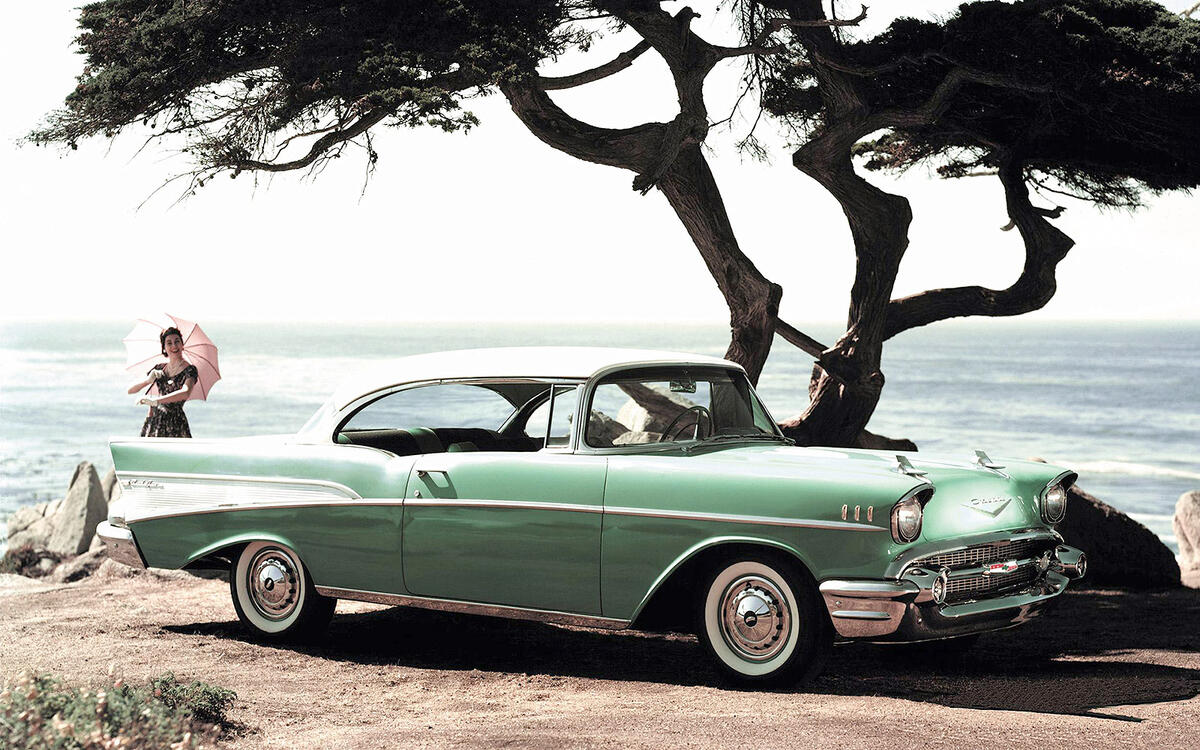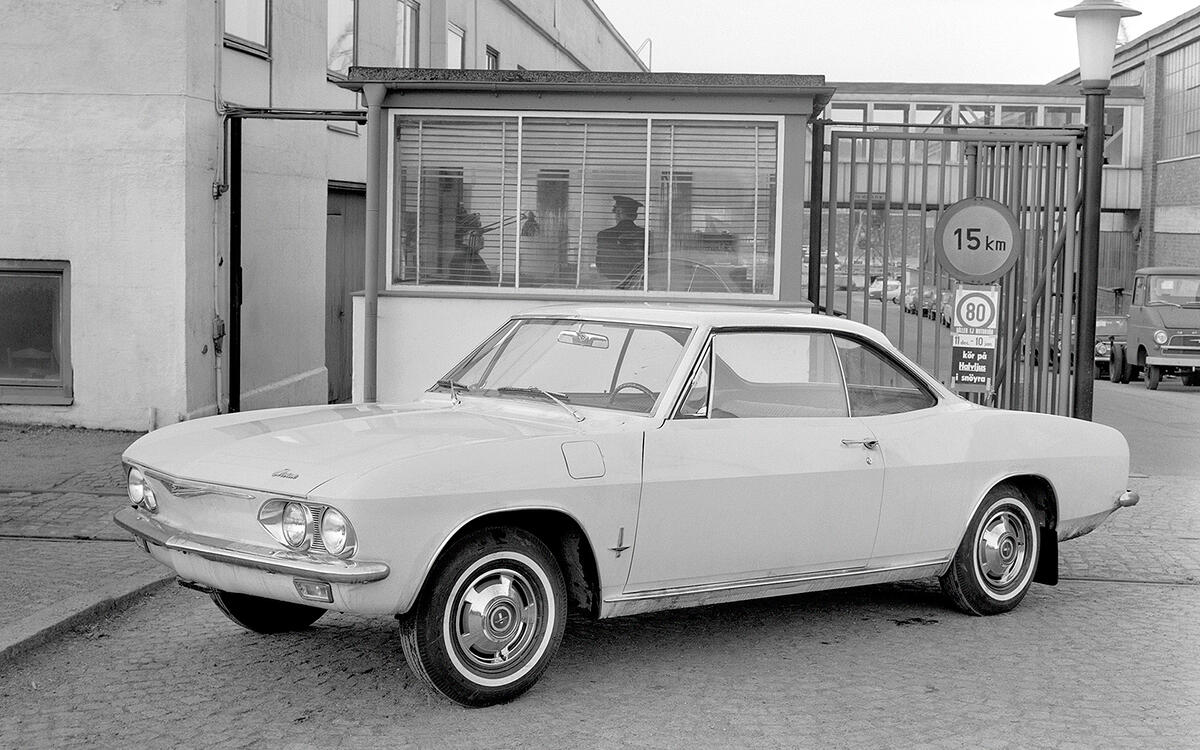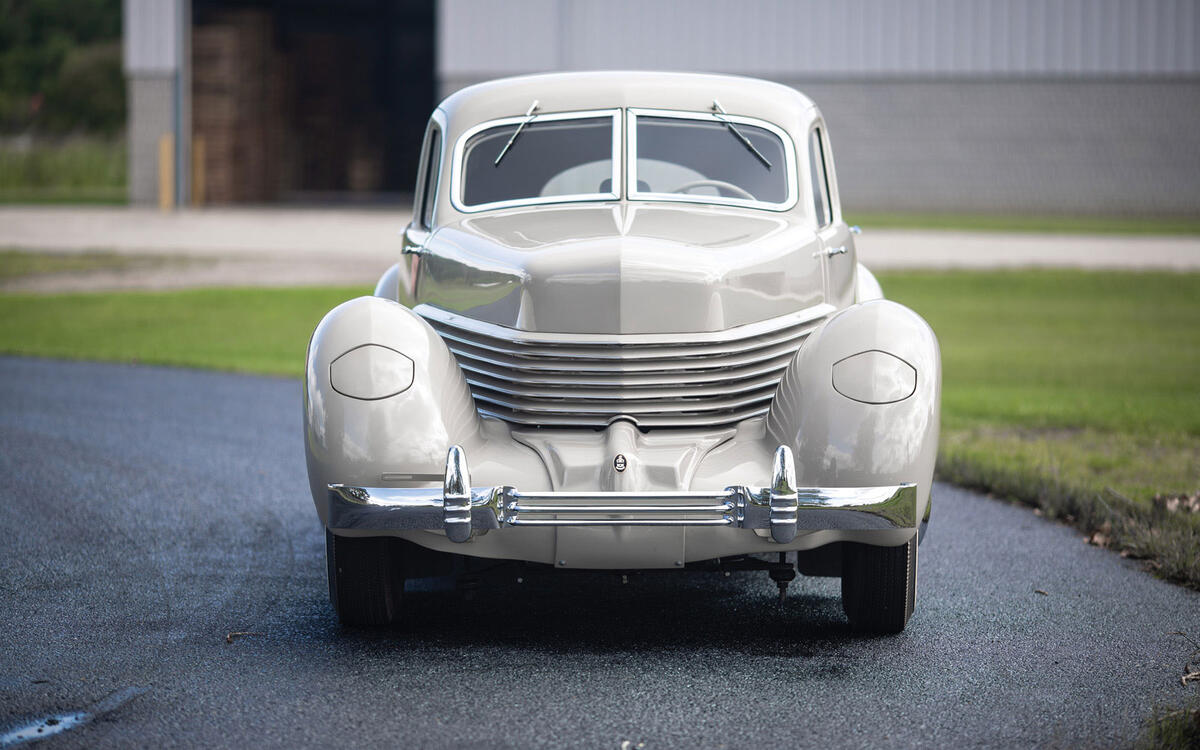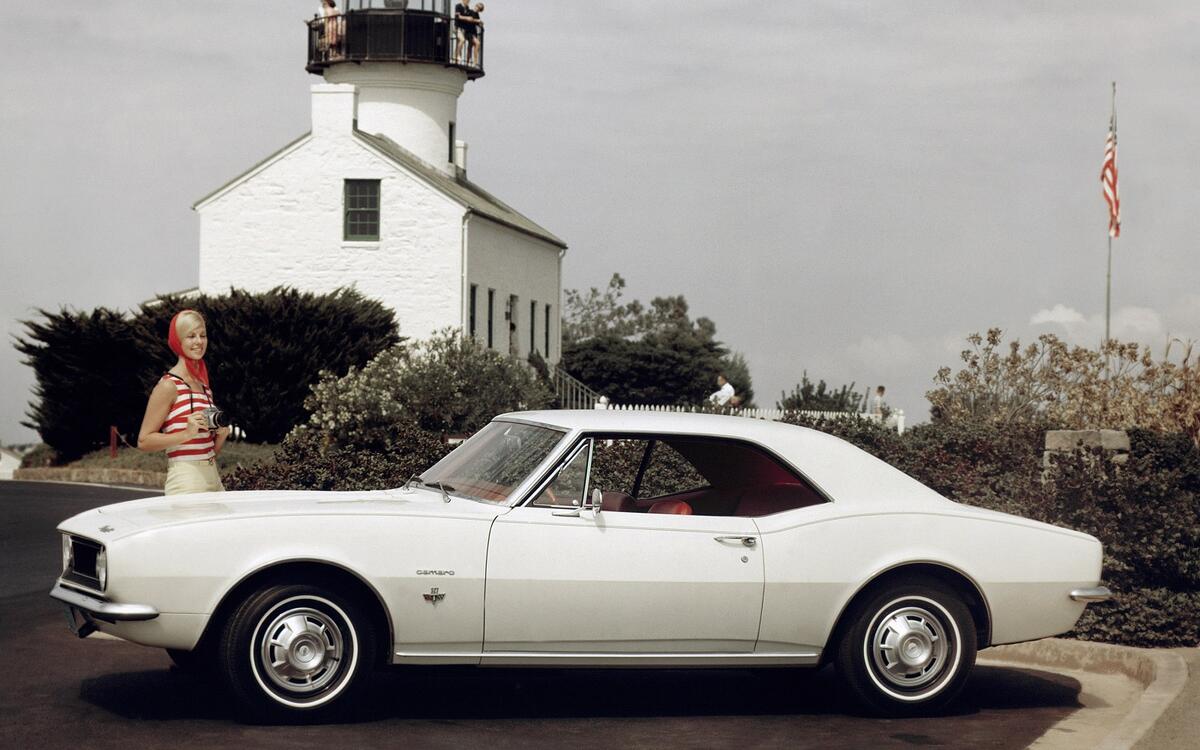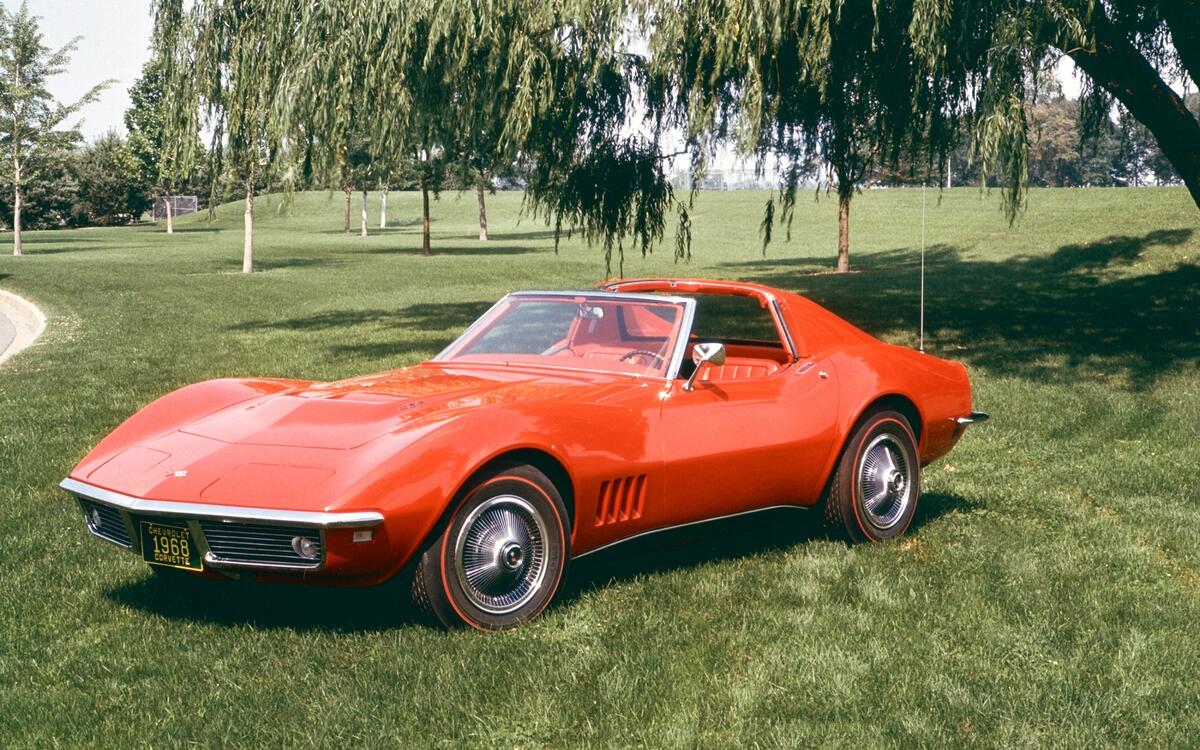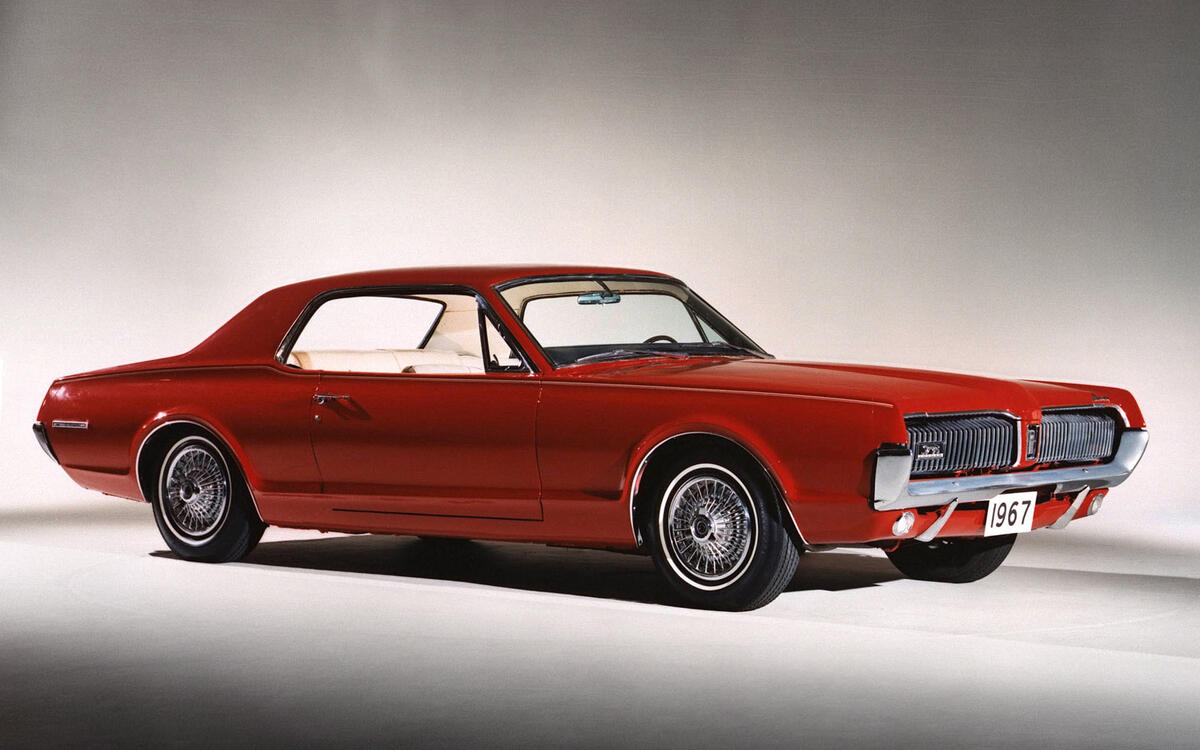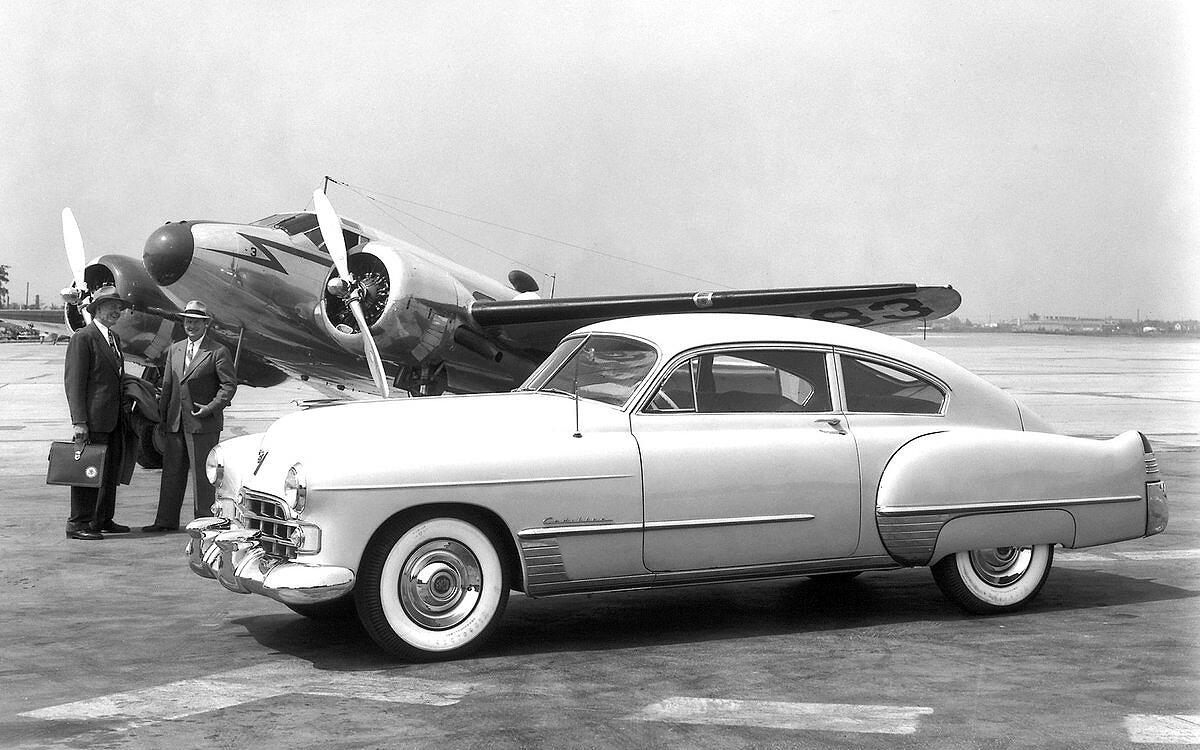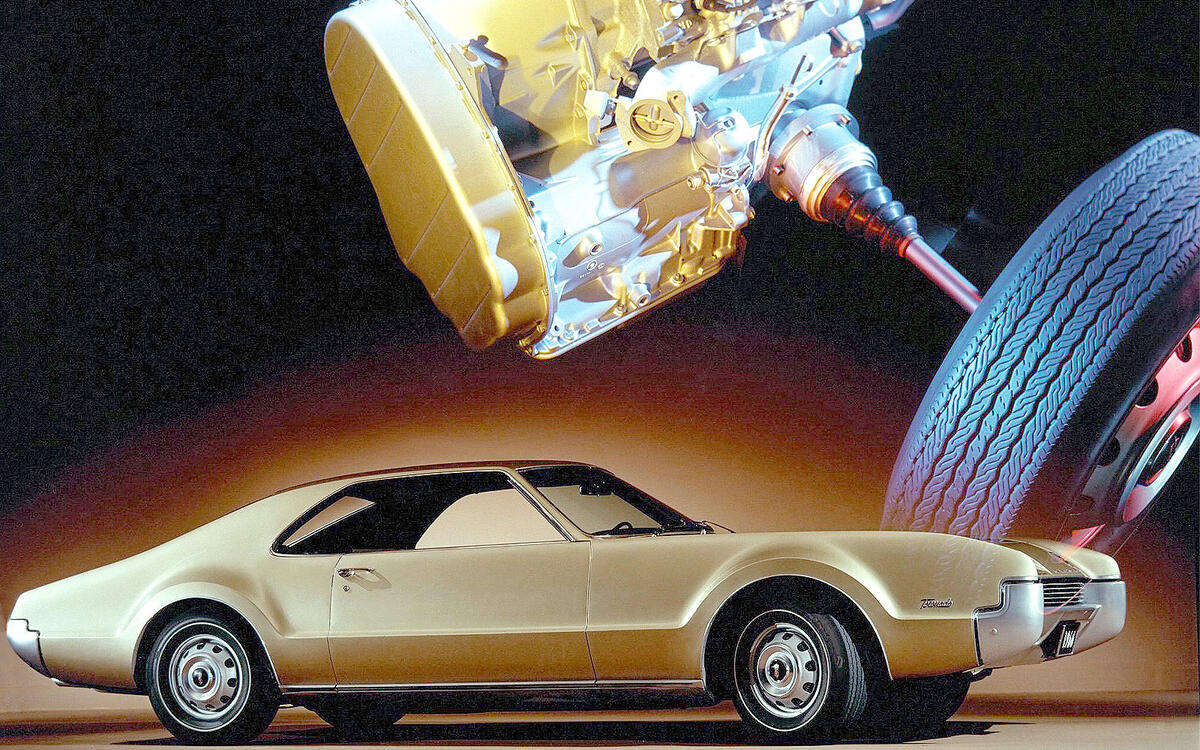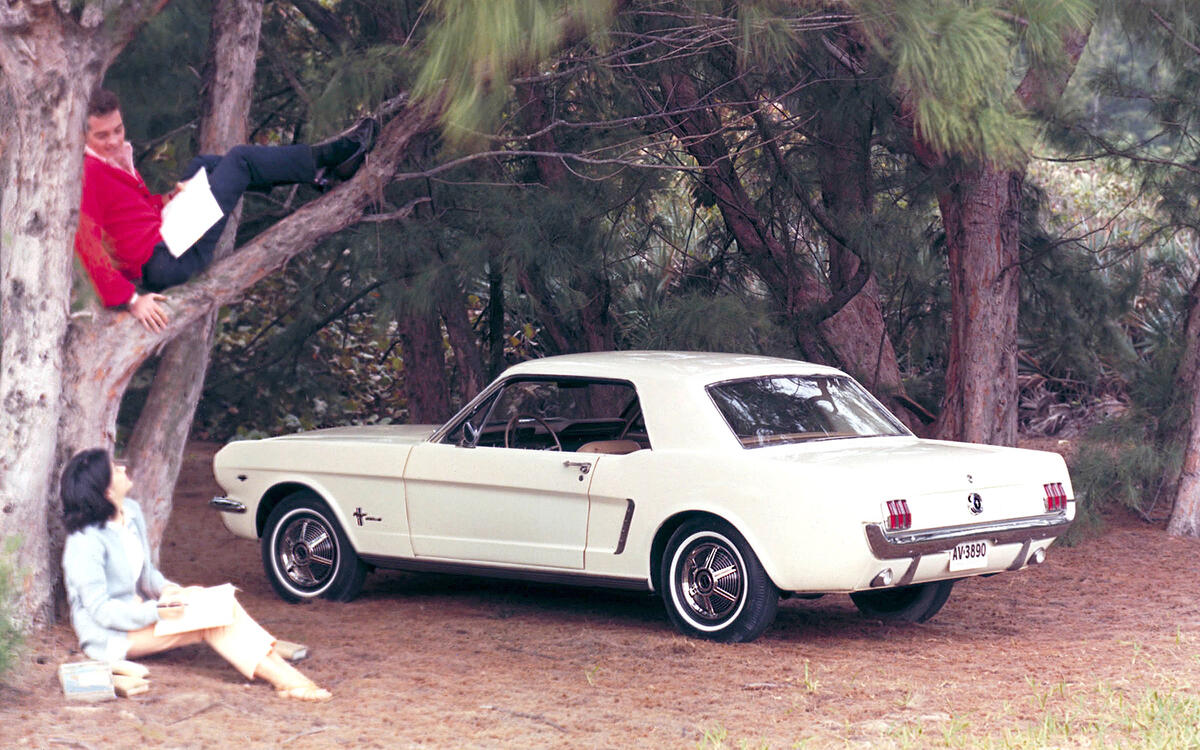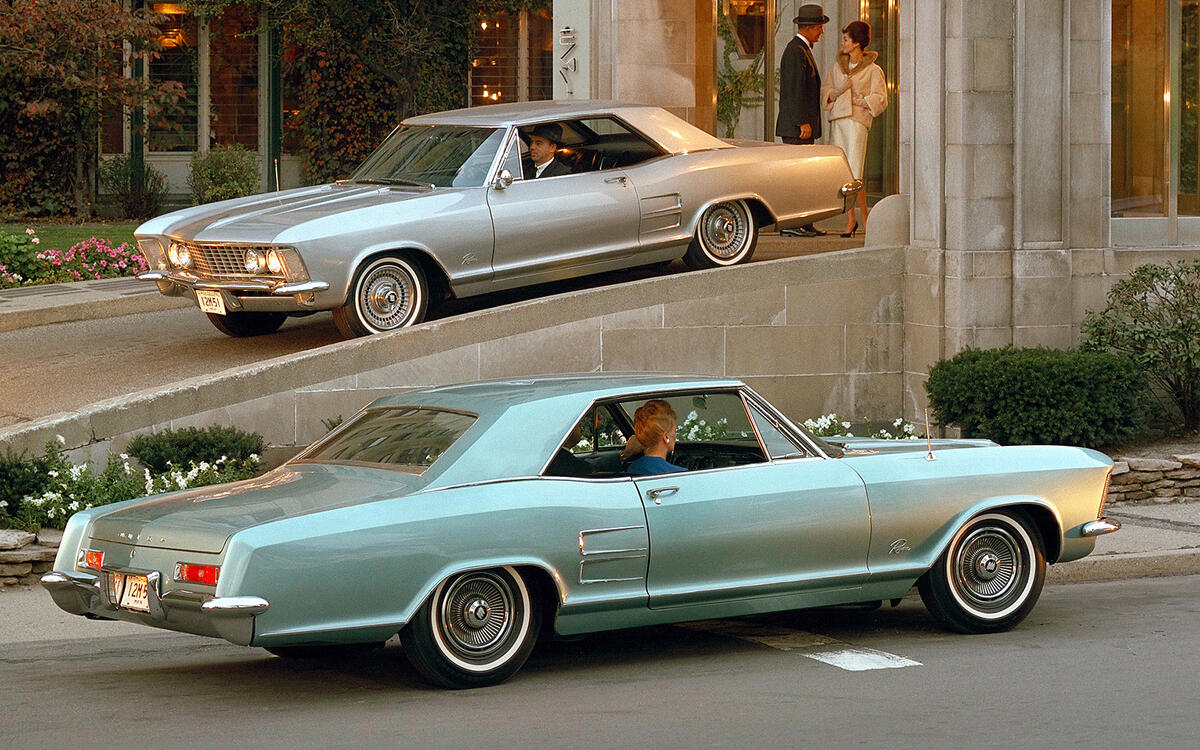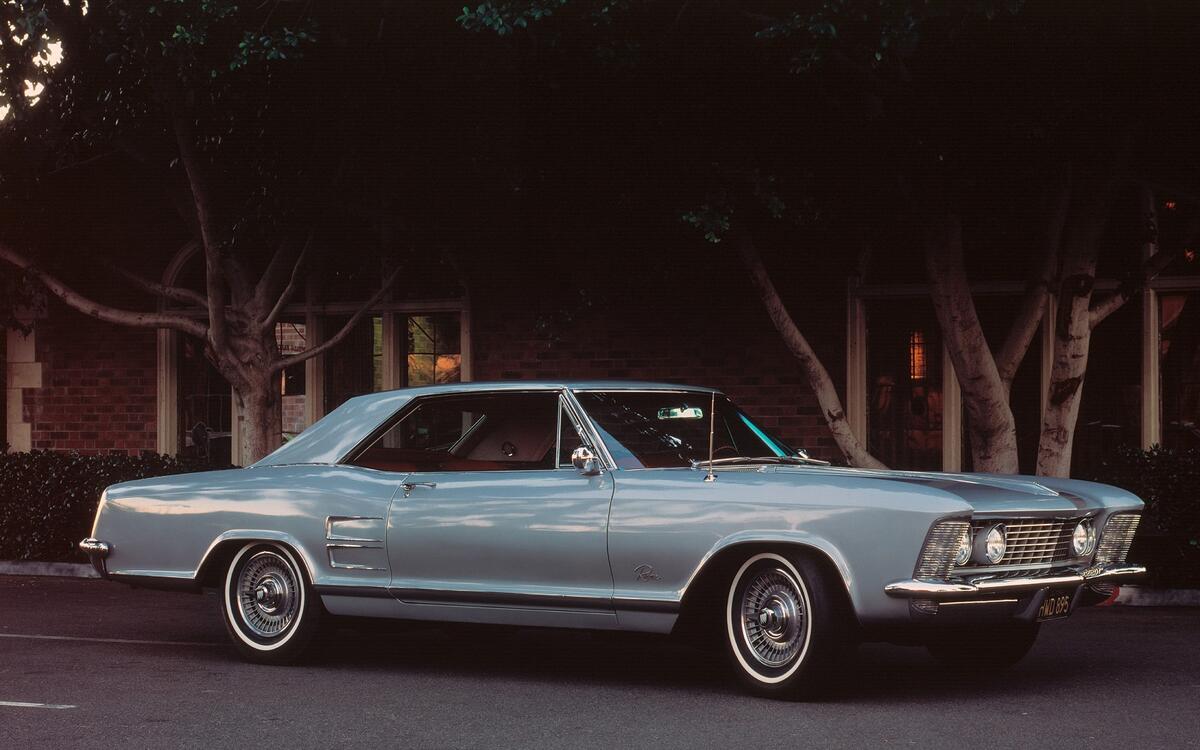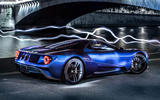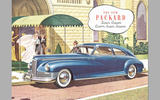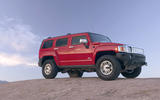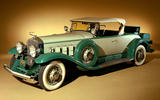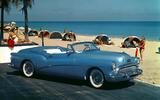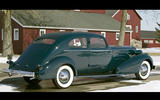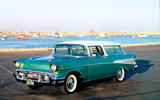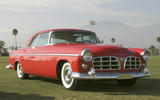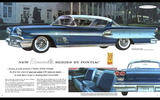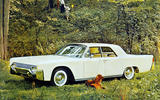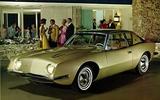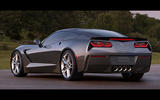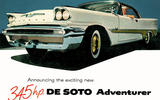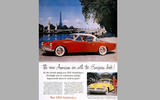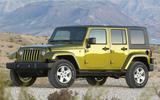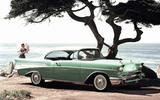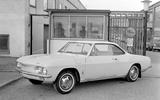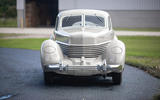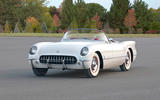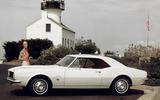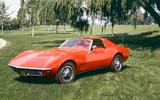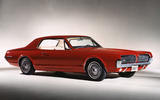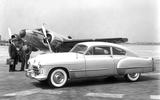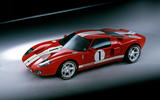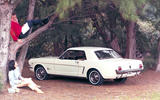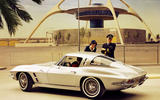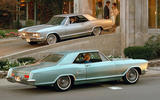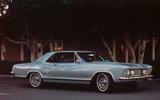 Slide of
Slide of
One form of Corvette or another appears fewer than four times in this Top 30 of most beautiful American cars ever made.
Now the model has undergone a startling transformation, from classic front-engine, rear drive V8 sports car to mid-engine, all-American V8 Ferrari challenger.
Is the 2020 Corvette a beautiful car? It’s too soon to say as knee-jerk reactions to anything are unwise. Need it be beautiful? Maybe not. Not all American cars of today or the past can be so described, but many have proportion, presence and punch in their design, and plenty are pleasingly handsome.
Jojn us, then, for Autocar’s first-ever roundup of what we reckon are the most beautiful American cars:
 Slide of
Slide of
30: 1946 Packard Super Clipper
In 1946 Packard ended production of aircraft engines and military vehicles, picking up where it left off in 1941 with the well-engineered Clipper straight eight, its ads exhorting America to ‘Skipper the Clipper’.
When launched in 1941 it was the first production car to be wider than it was tall, providing extra room and improved – much needed – cornering stability.
 Slide of
Slide of
29: 2006 Hummer H3
A Hummer in a beauty parade? This is beauty of a different, chunkily robust sort, in the mould of an item rationally designed for heavy-duty use.
Stare at an H3 for long enough and you realize how finely proportioned it is, and how well the shapes of its shallow windows complement its rugged all-terrain mission. H3s are already on the edge of being collectable.
 Slide of
Slide of
28: 1930 Cadillac Series 452 V-16
Launched at 1930 New York Auto Show five months after the 1929 stock market crash, Cadillac’s 185bhp V-16 was designed to compete with the very best. Strong early sales soon soon fell away, but Cadillac persisted.
The 452 was offered with limousine, two-seat roadster and four-seat cabriolet body styles, and it’s the roadster, of which just 10 are said to remain, that’s the most stylish.
 Slide of
Slide of
27: 1953 Buick Skylark
Despite looking mildly miserable with its pouting, fish-mouth grille, the ‘53 Skylark was fantasy made real, this the production version of Buick’s XP-300 1952 Motorama road-show concept. Roadmaster-based, its cut-down doors, shallower windscreen and the six inch chop forward of the bulkhead lent it a sportier look, as did the cutaway wheel wells and chrome ‘sweepspear’ romping along its flanks.
The length chop was allowed by the compact new V8 replacing Buick’s aged straight-eight. The Skylark was pricey – many famous people bought them, but only 1687 were made.
 Slide of
Slide of
26: 1936 Cadillac V-16 Aerodynamic Coupé
Despite the struggle of selling glamorous V16s during the Great Depression, Cadillac persevered for over a decade and the ’36 Coupé was among the most elegant of the series.
Exclusive and very expensive - steering wheel logo carved from solid crystal, anyone? - only 4076 were constructed, the majority built in its debut year. Not surprisingly, Cadillac later estimated that it lost money on every single V-16 sold.
 Slide of
Slide of
25: 1957 Chevrolet Nomad
Another car born out of GM’s roving Motorama extravaganzas, the Nomad began life as the 1954’s fibreglass Corvette shooting-brake concept, with two doors, a tailgate and sexy wraparound glazing.
A year later the same idea appeared on the big-selling Chevrolet Bel Air - it looked terrific and even better in ‘57. Despite regular model year renewals sales were never great, mainly because of the shortfall of doors.
 Slide of
Slide of
24: 1955 Chrysler C-300
Chrysler dealers drew big crowds when the company launched its 1955 models, talented designer Virgil Exner (1909-1973) launching the ‘Forward Look’ with a range of models that transformed the Pentastar’s line-up from dated and dowdy to futuristic and fabulous in one bold bet.
At the pinnacle sat the C-300 with a 300bhp version of an all-new Hemi V8, an engine that was to become as legendary as the cars themselves.
 Slide of
Slide of
23: 1958 Pontiac Bonneville 2dr Hardtop
Jet fighters, rockets and thrusting toward infinity were the obsessions of 1950s US car designers, proof to be seen in taillights, bumpers, rear wings and endless chrome motifs.
There was a king-size pair of such motifs to be found adorning each flank of the ‘58 Bonneville two-door Hardtop, the spearing nose of a rocket rendered in a pair of chrome strips that coalesced around a sizeable chrome rocket motor, aft of which fired a pair of con-trails. Between these were pinned four chrome stars representing outer space. Magnificent.
 Slide of
Slide of
22: 1961 Lincoln Continental
This car is indelibly associated with assassination of President John F Kennedy, who perished in a convertible.
Yet there’s no denying the handsomeness of this square-cut car, especially as a four-door hardtop, its sheer flanks lending it an elegance often missing from America’s bigger saloons.
 Slide of
Slide of
21: 1963 Studebaker Avanti
Briefly manufactured between June 1962 and December 1963 and dubbed “America’s only four-passenger high-performance personal car”, the Raymond Loewy Studio-designed Avanti broke 29 records at the Bonneville Salt Flats.
A fibreglass body mounted to the chassis of Studebaker’s entry-level Lark kept prices down, all versions got V8s and some a supercharger, none of this enough to reinvigorate Studebaker sales. The Avanti nevertheless lived on after its maker’s demise as a continuation model.
 Slide of
Slide of
20: 2014 Chevrolet Corvette Stingray
Just out of production, the C7-generation Corvette is the last front-engine model and will likely be collectible for that reason, for the fact that dynamically it was decisively the best and because it’s simply a great-looking sports car.
With the C7 GM battled to shift the ‘Vette’s ‘old man’ image using technology, power and compact, aggressive styling as its weapons.
 Slide of
Slide of
19: 1957 De Soto Adventurer Coupé
Sensible shoes De Soto suddenly came over all glamorous when it adopted designer Virgil Exner’s “Forward Look’ styling for its 1956 models. There was more to come with the ’57s however, the coupé’s dramatically rising rear fins signalling a 345 cu in V8 that hit the one-bhp-per cu in grail with its 345bhp.
The styling was flamboyant, the décor often gold, but this was a well-proportioned, potent machine that sadly, would soon be crushed by a recession.
 Slide of
Slide of
18: 1953 Studebaker Starliner Coupé
Not liked in its day but more highly valued now, the Raymond Loewy Studio-designed coupé is one of the more elegant 1950s American cars, but early production troubles stifled the demand fired by its fine proportions and subtle beauty.
Chrome and glitz were reluctantly added by Loewy chief designer Bob Bourke, a chrome-laden snout of a grille nevertheless lifting sales.
 Slide of
Slide of
17: 2005 Jeep Wrangler
You can argue endlessly over the stock Jeep Wrangler that looks coolest, but here’s a contender: the 2005 Sahara Edition of 1000 units, each in Light Khaki with graphite wheels.
The WWII Jeep grille survives recognisably intact, as do the rugged stance, chunky wheels and separate mudguards. Simple, functional and deeply appealing.
 Slide of
Slide of
16: 1970.5 Chevrolet Camaro Z/28 RS
The second-generation Camaro was closer to the look its creators wanted for the first, hastily created model.
Bigger and more muscular, in later life its clean shape would be debased with impact bumpers and assorted add-ons, but the quarter front bumpers of the highly desirable 1970 Z/28 RS emphasize the unadorned, handsome muscularity of the design.
 Slide of
Slide of
15: 2017 Ford GT
A decade after launching the first GT Ford unveiled a second in 2016, to celebrate 50 years since the GT40 took a 1-2-3 at the Le Mans 24 hours, a feat to be celebrated in cinemas in the autumn in Le Mans '66.
Striking for a cockpit so tapered that it separates from the rear wings, a pair of flying buttresses linking these to the roof, the latest GT is nevertheless a clear descendant of the original GT40.
 Slide of
Slide of
14: 1939 Cadillac Series 39-90 Convertible Coupe
Cadillac launched its first, magnificent V16 range just in time for the 1930 Great Depression, the first year the best for these vast cars and their elegantly sculpted engines.
Undaunted, Cadillac introduced an all-new V16 in 1938, encouraged by what turned out be a brief economic upturn. Only 175 39-90 seven-seat sedans and 19 Coupé Convertibles found homes, production ending in 1940.
 Slide of
Slide of
13: 1957 Chevrolet Bel Air Hardtop
Considered by many to be the icon of its age alongside Elvis, Marilyn Monroe, diners, drive-ins and dancing to the latest disc. The Bel Air was a staple saloon of its of its day, but this was a day when flamboyance was an American automotive staple, the ’57 Chevy delivering just the right mix of indulgence and elegance.
The Hardtop wasn’t the first to flaunt the pillarless look , but it was the first that was commercially successful.
 Slide of
Slide of
12: 1965 Chevrolet Corvair Monza
Never mind Unsafe At Any Speed, campaigner Ralph Nader’s famous critique of car safety finger-pointing the rear-engined Corvair – the 1965 redesign, of every square inch of surface sheet steel and, critically, the rear suspension, produced one of the most graceful, elegant and capable US coupés of the ‘60s.
The facelift made a good car of the ‘Vair, but Ford’s Mustang sales phenomenon did for it.
 Slide of
Slide of
11: 1936 Cord Westchester 810
For a car that fast-forwards to the future, it’s hard to beat the Cord 810. Apart from its striking coffin-nose face, it was first with hidden headlights, first with concealed body hinges, first with a petrol filler flap and first with a clamshell bonnet.
It also sat low enough to do without running boards, was front-wheel drive, had a semi-automatic transmission and later, a supercharger. Launched before development was complete, poor reliability was the death of it.
 Slide of
Slide of
10: 1953 Chevrolet Corvette
Fired by the impact of its 1953 EX-122 Corvette concept, Chevrolet sped its Motorama show car into a glassfibre reality. Initially just 300 were made, each identically coloured, underpowered, underequipped, overpriced and, when customers arrived at showrooms, unavailable for sale, GM instructing dealers to retain them as demonstrators.
Upping production produced few sales until a second 1956 launch propelled the ‘Vette toward a healthy future.
 Slide of
Slide of
9: 1967 Chevrolet Camaro
The original Camaro was a hastily assembled compromise disliked by its own designers, their haste triggered by the success of the Mustang.
Despite their dissatisfaction it was and remains one of America’s prettiest coupés, was a more than worthy rival to Ford’s pony car and is almost as long-lived.
 Slide of
Slide of
8: 1968 Chevrolet Corvette Sting Ray
The Sting Ray name appeared on the previous Corvette, but this time the creature itself was part-inspiration for the car’s spectacular curves, along with design boss Bill Mitchell’s Mako Shark II concept.
The T-top, with its twin removable roof panels, was a production first, as were hidden wipers and fibre-optic interior illumination. And the optional big block power outputs were massive.
 Slide of
Slide of
7: 1967 Mercury Cougar
Despite sharing none of its fatly curvaceous style, the Cougar was part-inspired by Jaguar’s Mk X saloon, that car’s lithe, sculpted bodywork producing a similar look for the Mercury, but via entirely different design language.
Mercury was thinking of a coupé well before the Mustang arrived, though this car would use the cheaper car’s innards, and its windscreen too. A V8, concealed headlights and sequential indicators were standard, the price keen and sales brisk.
 Slide of
Slide of
6: 1948 Cadillac Series 62 Club Coupé
Though bearing a few of the Lightning P-38 fighter aircraft motifs that would soon massively influence GM’s designs under chief Harley Earl, Cadillac’s ’49 Club Coupé is well-proportioned, elegant and classy – so much so, that it inspired the Bentley R Type.
Evidence of Earl’s Interceptor concepts’ aviation influences can be see in the “rudder-type styling” of the rear wings, those up-kicks barely a hint of the fins to come.
 Slide of
Slide of
5: 2005 Ford GT
A Ford that dually celebrated its centenary and the marque’s legendary GT40, the GT was a sensitively smoothed and updated interpretation that massively improved comfort and convenience.
More vitally, it was a brilliant, savagely quick drive, this the result of obsessively detailed engineering and dedicated development.
 Slide of
Slide of
4: 1966 Oldsmobile Toronado
Gargantuan of bonnet and cubic inches too, the 7.1-litre V8 Toronado was striking not only for its scale and handsome lines, but also for the fact that it was front-wheel drive.
The so-called Unitized Power Pack arranged an automatic transmission alongside the V8, driven by a 2294-piece Morse chain, this element engineered by one Bob Stempel, later to briefly run GM as a whole. The Toronado honoured America’s last front-driver, the Cord 810, with its concealed headlights and telephone dial wheels.
 Slide of
Slide of
3: 1964 ½ Ford Mustang
The first Mustang made its national debut on April 17, 1964 - a Friday. Priced low at under $2,500 ($20,700 today), by the Sunday 22,000 had been sold and dealers were left scrambling for as many copies of this crisply glamorous compact as they could get.
The Mustang’s long bonnet, short boot proportions, the formal cut of its pillarless hardtop and the perfect application of chrome décor (never mind that the side vents were dummies) made this car hugely desirable, and that was without counting the twin binnacle cockpit, the V8 upgrade and the myriad options.
By the end of 1966, Ford had sold 1.4 million and the ‘pony’ car category had been created. The nameplate is so enduringly successful that soon it will be the only car that Ford still sells in America.
 Slide of
Slide of
2: 1963 Chevrolet Corvette Stingray
The sometimes troubled life of the first-generation Corvette was left behind with the ’63 C2, which cemented the ‘Vette’s status as a real sports car.
Its inspiration was GM design czar Bill Mitchell’s Mako Shark 1 convertible, designer Larry Shinoda (1930-1997) turning this into the elegantly muscled, teardrop canopied, split-window coupé. The convertible’s styling was closer to the Mako Shark, but the coupé was the tour de force.
 Slide of
Slide of
1: 1963 Buick Riviera
Initially conceived as the model to revive General Motor’s luxury LaSalle brand, the LaSalle II project would later be the subject of an internecine business case contest between GM’s Buick, Oldsmobile and Pontiac brands. Buick won, but had to engineer the car and develop an interior worthy of the car’s classy beauty.
It succeeded brilliantly, and we believe the ’63-’65 Riviera is the most beautiful car America has ever produced.
 Slide of
Slide of
Who wins?
Cars from General Motors rule this list, occupying 18 out of the 30 places. Why? Well, it's worth remembering that for much of the post-war period it had over 50% of the American car market with its various brands, some of which, like Chevrolet and Buick, would have been massive companies in their own right. As recently as 1980 GM had a 44% share, compared with 17% in 2018.
So it produced a lot of cars, and for decades far more than its Detroit rivals, so arguably had a head start in this contest. But there's more to the story, as GM design bosses Harley Earl (who reigned from 1927 to 1958) and then successor Bill Mitchell (in the role from 1958 to 1977) had an unerring sense of how design could create accessible desire for GM's best cars, leading to willingness to sign on the dotted line.
Ford trails a distant second, with five entries, and Chrysler with three. Two deceased companies finish us up, with Studebaker-Packard also on three, and Cord with one. They're long gone, but their striking designs live on.
This is by its nature a subjective story, and you won't agree with all our judgements, but we hope that it's reminded you of some great designs, and perhaps highlighted some you didn't know about. We salute them all.
Can we call the new eighth-generation Corvette beautiful? Perhaps – but it’s got its work cut out compared to these cars
Advertisement


